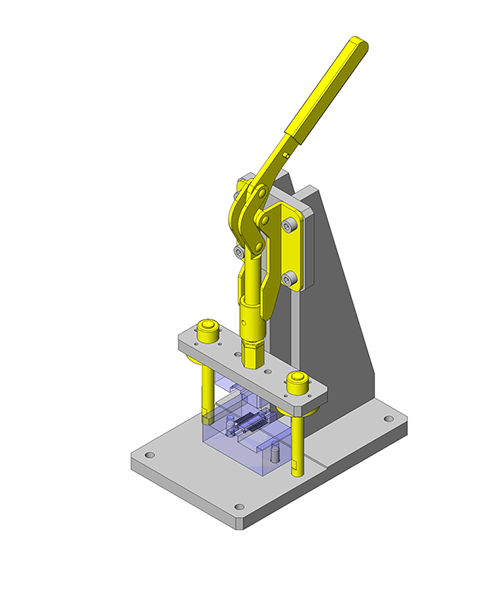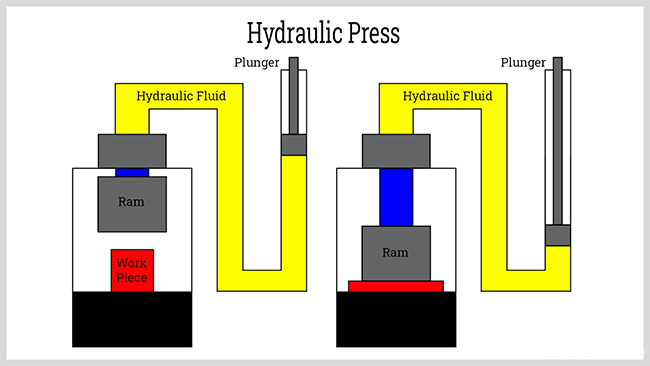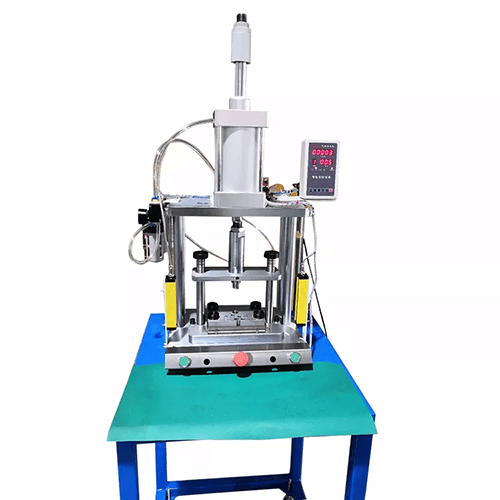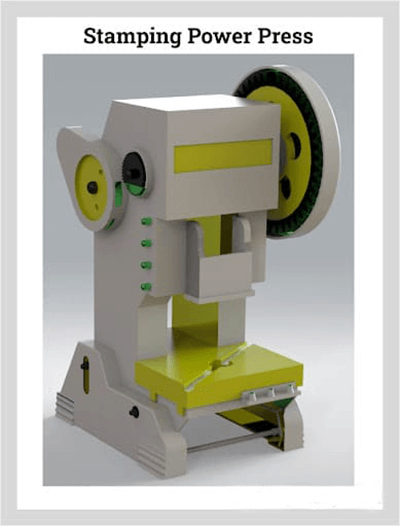Introduction of Press Machine
Press machines play a significant role in the sheet metal manufacturing industry. They are also known as forming presses or mechanical presses.
Once a workpiece has been designed, operators use press machines to manufacture it. These machines work by applying pressure to bend and press the sheet metal.
A press machine consists of a frame and base, and it is equipped with punches and dies, which are located on the ram and workbench, respectively.
The machine applies pressure to the metal plate through a power device that drives the punch.
Press machines come in various types, including hydraulic, pneumatic, and mechanical, and are differentiated based on their power system, capacity, and other factors.
Different press machines operate through different dynamic mechanisms, and their design structure may include C-frame presses and screw presses.
There are numerous press manufacturing processes, such as die cutting, forging, and stamping.
In this article, we will explore the definition of press machines and their various types.
The Driving System of the Press Machine

The driving system of a press machine is a crucial component that powers the machine's operations.
In a hydraulic press machine, the ram movement is driven by the hydraulic cylinder and the piston rod, which are typically located on both sides of the press machine.
The hydraulic system is capable of sustaining large loads and longer strokes continuously.
The mechanical drive system, on the other hand, consists of components such as a crank, flywheel, eccentric, and knuckle joint.
The flywheel rotates, connecting the crank to drive the movement of the ram, providing a strong mechanical driving force, which is ideal for blanking and stamping processes.
A pneumatic press machine operates on compressed air, and its structure is relatively simple.
The power comes from the movement of compressed air, making it fast and capable of quickly driving the ram.
In conclusion, each type of driving system has its own strengths and is suitable for different metalworking processes.
Types of Press Machine
Press machines can be classified by different standards, including mechanical (hydraulic, pneumatic, etc.) and stamping (forging, punching, etc.).
Manual Press Machine

A manual press machine is operated manually by the operator, who applies pressure to the machine through a handle.
After the handle is rotated, the ram moves up and down, generating force through the lever to drive the punch to make a linear motion.
The hydraulic cylinder generates high pressure and slowly drives all components of the punch and die process of the workpiece.
The manual press machine is suitable for small batches and simple production and can be used for bending, blanking, and punching.
The structure of the whole machine is very simple, including a C-frame, punch, die, handle, and guide rail.
The larger the opening of the C-shaped frame, the better the feeding of metal plates.
It has an independent hydraulic system, which has the features of small volume and low operating cost.
The manual press machine is very slow and suitable for one-time and light operation.
Hydraulic Press Machine

Hydraulic press machine drives the ram through a series of hydraulic system components, with the oil cylinder usually installed on the top beam.
The speed of the ram is determined by the circuit flow and oil quantity of the hydraulic system.
By installing different punches and dies, the machine can work.
To ensure operator safety, the hydraulic press machine is equipped with sensing devices and safety switches.
With larger capacity, longer stroke, and adjustable tonnage, the hydraulic press machine is more suitable for manufacturing complex workpieces.
It is ideal for forming, forging, punching, and other sheet metal processes.
However, the hydraulic press machine has some disadvantages, such as oil leaks, unpleasant odors, noise, and significant heat generation.
Additionally, the use and maintenance costs of the hydraulic press machine are relatively high.
Mechanical Press Machine
Mechanical press machines use mechanical energy to process sheet metal and come in various types.
The power source of the mechanical press machine is the motor, which transfers energy to the ram.
Compared to hydraulic press machines, mechanical press machines have a faster speed and are suitable for stamping.
They are characterized by the rapid and repeated application of pressure within a limited stroke.
However, the stroke of the mechanical press machine is unstable because force is applied at different speeds, making it unsuitable for manufacturing complex workpieces.
Currently, the press capacity of the mechanical press machine can reach 12,000 tons.
Mechanical press machines provide fast and repeatable operations, reducing the cost of mass production.
Pneumatic Press Machine

A pneumatic press machine is powered by compressed gas, which is compressed and expanded to increase the pressure in the cylinder.
The pressure in the pneumatic press machine is consistent throughout the entire stroke, and there is no need to adjust the pressure.
The machine moves quickly and can carry out multiple cycles rapidly.
The maximum force of the pneumatic press machine is determined by the cylinder aperture and the regulated working pressure.
During use, the pneumatic press machine must maintain the operating pressure; otherwise, the stroke of the press will be intermittent, which is not conducive to process monitoring.
To prevent air supply failure, pneumatic check valves and shaft locking devices are required to ensure stroke accuracy and operator safety.
he pneumatic press machine is suitable for cutting, bending, punching, and extrusion.
Punching Press Machine
The working principle of the punching press machine is very simple.
It is used for punching workpieces in sheet metal technology and can be used to cut holes and form sheet metal.
The forming technology of the punching press includes blanking, punching, perforating, and bending.
Punching machines have punches and die of different sizes and shapes.
During processing, the plate is placed under the punch, and the pressure of the machine causes the punch to move downward.
The punching press machine has two types: C-frame and H-frame.
The C-frame drives the ram through the hydraulic cylinder to operate the punch, while the H-frame is designed to place the metal plate in the center of the machine without protruding.
The C-shaped frame occupies less space and is flexible to use, while the H-frame is suitable for large-scale manufacturing.
Stamping Press Machine

The stamping press machine forms metal sheets by applying pressure on them.
It features interlocking punch and work table devices that secure the plate for cutting or punching into the final shape.
Due to its large size and complex operation, it requires a great amount of power for driving.
The surface of the workpiece produced by the stamping press machine may have defects, and the punching holes may not be clean enough.
The stamping machine only forms the metal sheet and may not handle details well.
Precautions When Selecting A Press Machine
The press machine is widely used in the sheet metal processing industry and has powerful functions.
The press machine can be used for cutting, bending, stamping, forming, and other metal processing.
It is necessary to understand the function and use of the press machines before making a choice.
Selecting an inappropriate press machine leads to a waste of resources and low machine efficiency.
Conclusion
Press machines are essential in the sheet metal industry, as they can perform various metal processing tasks such as cutting, bending, stamping, and forming.
The most effective machines for workpiece bending are press brakes and panel benders.
With 20 years of professional experience in sheet metal machine production, ADH offers a wide range of products, including press brakes, panel benders, laser cutting machines, and shearing machines.
Our sales team can help you select the right machine that meets your needs while ensuring the most cost-effective solution.
Browse our products or contact our sales team to learn more about our products and their pricing.





